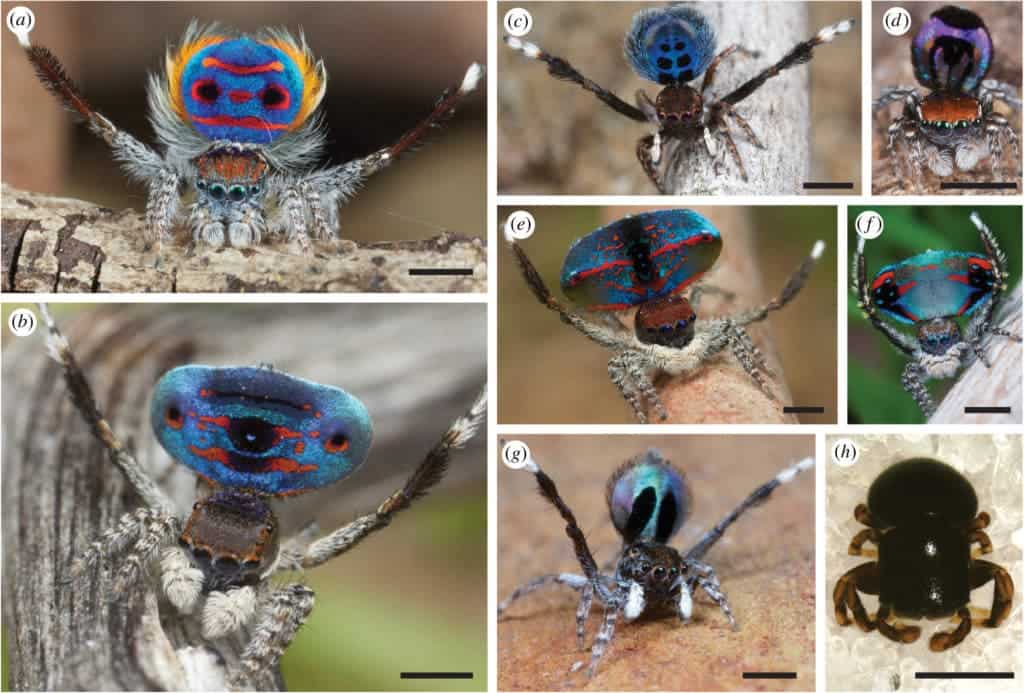Spiders aren’t the prettiest bunch of creatures out there, but you have to admire the peacock spider. With a vibrant display of blue, red, and orange spots, male peacock spiders go to great lengths to attract female partners, showcasing their brilliant colors through elaborate dances.
But how are the colors so vibrant in the first place?

To get to the bottom of this, Harvard researchers analyzed microscopic bumps on the spiders’ exoskeleton, finding that the key is actually an optical illusion: they have ultra-dark patches that help accentuate the other colors.
The two species of peacock spiders analyzed (Maratus speciosus and M. karrie) have naturally black patches, but they also use another trick: tiny, tightly-packed bumps called microlenses. These microlenses are so effective at absorbing light that they only reflect 0.5% of the light they receive, rivaling the darkest materials ever created by humans.

The tiny bumps bounce light around so that very little of it is reflected back, and the vast majority is diffracted outside of the field of view of an onlooker (say, an interested female). Surprisingly, this type of structure is very similar to that of human-made solar panels, scientists note. These super-black patches are also seen in a number of other creatures, including birds-of-paradise, leaving researchers to wonder if this is an example of convergent evolution (the independent evolution of the same feature by multiple creatures). Just like the spiders, birds-of-paradise blend pitch-dark surfaces with dazzling colors and elaborate mating dances.
“The microlenses of super black cuticle in peacock spiders bear a striking resemblance to anti-reflective surface ornamentation that enhances absorption and reduces specular reflectance in other organisms—including flower petals, tropical shade plant leaves, light-sensitive brittlestar arms and ommatidea in moth eyes,” write Harvard University evolutionary biologist Dakota McCoy and colleagues in the new study.
“We hypothesize that super black evolved in peacock spiders and birds of paradise convergently through a shared sensory bias intrinsic to colour perception.”

While not unique, this is a very rare type of structure, researchers explain.
“In most organisms, melanin pigments produce normal black colour with white, specular highlights (e.g. glossy hair). By contrast, structural super black in peacock spiders—as well as birds, butterflies, snakes, and human-made materials —creates a featureless black surface with no highlights.”
Whether or not this is really an example of convergent evolution remains to be further studied. In the particular case of the spider, researchers hypothesize that the extreme competition between male peacock spiders is responsible for producing these extremely bright colors and the light-absorbing structures that further accentuate them.
The study has been published in the Proceedings of the Royal Society B.


